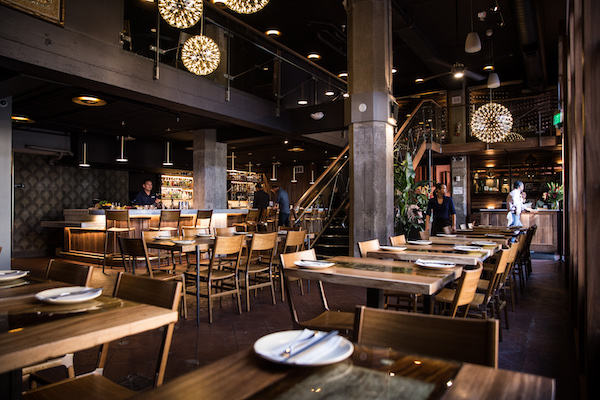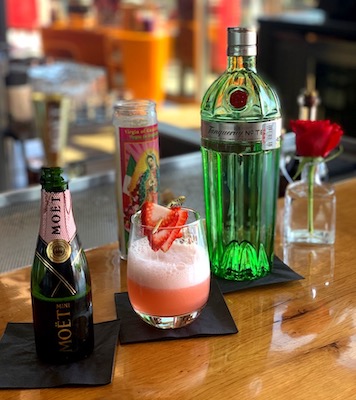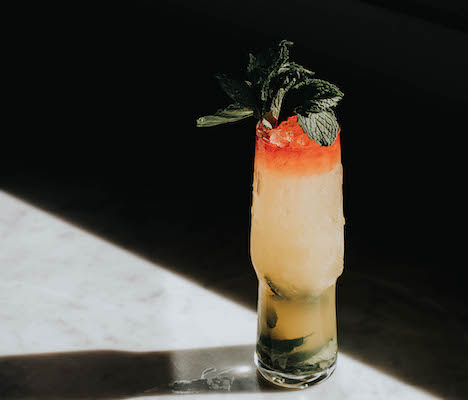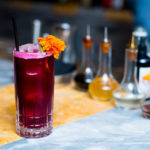Gin is one of the most innovative and exciting spirits categories today. Producers are experimenting with all aspects, from different base-spirit ingredients, unusual botanicals and even barrel-aging.
For decades, gin meant the juniper-forward London Dry style, and popular calls encompassed just a handful of well-known brands such as Beefeater, Gordon’s, Tanqueray and Bombay. In this century, the New Western (or alternatively, New World) style emerged, in which juniper took a back seat to citrus, floral and other botanical notes.
At the same time, bartenders got interested in historical iterations such as the Dutch precursor genever and the slightly sweeter Old Tom style. Gin is now experiencing another evolution with whole new subcategories arising, from fruity-sweet and briny-savory styles to anomalies such as rose-pink gins.
What’s more, distillers in Japan, Scotland, Spain and other far-flung regions are gaining world-wide recognition for unique gins. All these new products coming to market offer bartenders a broader palette of gin types to create more unusual and intriguing gin-based cocktails.
“I absolutely love the creativity behind gin these days,” says Rohini Moradi, director of bars for Fort Lauderdale, FL-based Shula’s Restaurant Group. “I say bring it on, and give us mixologists more to play with.”
Gin spurs growth
“Gin has been a solid growth category for us. It is really pushing into the vodka/whiskey area for sales,” says Scott Marsh, director of operations/bar manager at Oklahoma City, OK-based The Social Order Dining Collective. The company operates five restaurant concepts including The Jones Assembly, its flagship restaurant and music venue.
Consumers are more open to experimentation and new types of gin, Marsh says. “Bartenders also have a deep love affair with gin right now, so we are seeing a lot of bespoke cocktails for guests, swapping out base spirits in classics for gin, etc.”
While total gin consumption in the U.S. was nearly flat in 2019, according to the Beverage Information Group, the premium players in the category are showing promise. Category growth is driven by the high-end gin segment, with volume up 5.1% and revenue rising more than 6%, and especially top-shelf superpremium gins, where revenue rocketed 32.6% last year, according to the Distilled Spirits Council of the U.S.
“As the cocktail comeback continues, many bartenders are simplifying menus, reverting to two- or three-ingredient classics employing premium ingredients with modern or localized twists,” says DISCUS’ chief economist David Ozgo. And that’s where superpremium gins can shine.
New style abound
Although gin innovation seems to be reaching into every possible direction, a few distinctive trending areas can be discerned.
Fruity: A number of new gin launches are fruit-forward. Some examples include Gordon’s White Peach and Sicilian Lemon flavored gins; Edinburgh Gin Distillery, with Raspberry and Gooseberry & Elderflower gins; Copper & King’s The Ninth, a blood-orange-flavored gin aged in Curaçao barrels; and Tanqueray Sevilla Orange.
Budget grocer Aldi’s recently launched line of five gin flavors, including Lemonade, Raspberry & Watermelon and Summer Trifle gin liqueurs. This strategy is reminiscent of vodka’s flavor proliferation a decade ago.
Savory: On the opposite end of the spectrum are gins that emphasize savory aspects. Examples include Edinburgh’s briny Seaside; tomatoey Moletto gin; the Spanish Gin Mare made with basil, rosemary, thyme and Arbequina olives; and Sindica, a London Dry infused with hemp terpenes.
Pink: Trading on the rosé wine craze, a number of gins drink pink by including red-hued botanicals such as hibiscus, rose petals and rhubarb. Examples include Gordon’s Pink Gin; Dorothy Parker Rose Petal; Malfy Gin Rosa; and Beefeater London Pink—to name just a few.
Barrel-aging: Gin’s precursor genever is often barrel aged, as is Old Tom style gin. Now a few gin producers are finishing gin in oak to add color and perhaps gain crossover appeal from whiskey fans. Examples include New York Distilling’s Chief Gowanus; Barr Hill Tom Cat Reserve gin, Few Spirits Barrel gin; and Citadelle Reserve.
One-offs: Then there are some decidedly different variations. Gin made from ants—yes, the insects. A couple of these have crawled into the market: Green Ant gin from Australia; Anty gin from Cambridge Distillery and the Nordic Food Lab; and Ant Gin from U.K. producer Shooters.
Just as chefs have taken to foraging for ingredients, so have gin producers: The Botanist Islay Dry Gin incorporates 22 botanicals foraged on Islay in Scotland; and Gray Whale gin follows said mammal’s migratory route along the U.S. coast to forage for botanicals, including California almonds and kombu seaweed.
In a category of its own is Nadar Gin, which is distilled from peas and claims to be the world’s first “climate-positive gin with a negative carbon footprint,” according to Scottish producer Arbikie.
Marketing gimmick?
Which begs the question: Are these new gins legitimate variations or are they marketing gimmicks?
“Both,” says Scotty Wolff, beverage director at Burma Club, a Burmese-inspired restaurant and bar in San Francisco. “They are very appealing to consumers and helping to introduce nontraditional gin drinkers to the gin market. St. George is doing a good job at opening up a door for customers to venture into more conventional gins.”

For its part, Burma Club carries 12 different gins.
“There are gimmicks in all of it, and many of them are appealing,” agrees Misael Gonzalez, general manager and hospitality director at The Paramour Bar rooftop venue in San Antonio, TX. “I can appreciate the brands that use these techniques thoughtfully.”
For instance, “the makers of Botanist Gin don’t throw in a huge list of botanicals for giggles,” Gonzalez says. “Barrel aging imparts complexity and can act as ‘rounding’ tool that allows botanicals to work as one defining flavor and house style.”
Paramour stocks well over 50 different gins. Tanqueray, Hendrick’s, and Bombay Sapphire have been the most popular calls, but that’s changing fast.
“Sure, some may be gimmicks or marketing tools, but consumers can differentiate between a gimmick and quality,” says Moradi. Shula’s Restaurant Group encompasses more than 25 restaurants including Shula’s Steak House, Shula’s 2 Steak & Sports, Shula Burger and 347 Grille by Coach Shula, each with its own bar program. Moradi will add to the backbar as new and different gins appear in the market.
“In the last decade, gin makers realized that since the only defining factor of gin is juniper berry, they could get creative with the distillation process, botanicals, and even aging process—which was previously confined to whiskey and rum,” he says. “Gin has become a patron favorite for this reason.”
Gin terroir gains a foothold
As more countries get into the gin game, the idea of terroir comes into play. Producers use traditional fermentation ingredients and local botanical ingredients. Scotland, Spain and Japan are pioneering stars in the gin world.
“We have been seeing the trend of producers creating gins that utilize botanicals from the area of the world from which they come, instead of just using the traditional botanicals in gin production,” says Charles Friedrichs, bar lead at The Jones Assembly. “This tends to create some insanely flavorful and unique gins.”
Indeed, “We talk about wine and terroir; this concept has gained a foothold in the gin category,” notes Wolff at Burma Club. “Now gin producers are becoming interested in terroir and flavor profiles found in specific regions.”
Wolff offers St. George’s Terroir Gin as an example, which employs Californian flora Douglas Fir, bay laurel and coastal sage. “As this movement grows, we’ll find gins that are more expressive of their locale.”
Gonzalez offers The Botanist, with its locally foraged botanicals, as an example. “The ingredients are true representations of Islay terroir; there’s a real connection to Scotland.”
He also cites the new wave of Japanese gins. “I think Roku gin showcases this as well by infusing Japanese botanicals like cherry blossoms and yuzu,” Gonzalez says, adding, “Products like these let me take my guests on an adventure.”
Foreign accents
Many of the Scottish gins are produced by malt distillers, and botanical additions include local and unusual flora such as heather, gorse and lady’s bedstraw. Some Spanish gins start with a wine base rather than grain, and botanicals can include almonds and olives.
Japanese distillers often use traditional base spirits fermented from rice, barley, sweet potato or sugarcane. Botanicals can include cherry blossom, green tea, ginger, sansho peppers, Japanese cypress and yuzu.
Just as Japan has caused a stir in the whisky world, gins from Japan are disruptors. Some of the major spirits companies are investing in this arena.
Beam Suntory’s portfolio includes Roku gin (as well as Larios gin from Spain). Pernod Ricard has made a significant investment in Kyoto’s Ki No Bi Dry Gin, including construction of a state-of-the-art distillery. The company’s portfolio also includes Beefeater and Plymouth, as well as the recently acquired Malfy Italian gin and Monkey 47 from the Black Forest in Germany.
Tips and techniques
All these different styles of gin and various nuances are both a boon and a challenge to mixologists when riffing on the classics or creating new cocktails. Here are a few suggestions from the experts.
“First and foremost, know what is in your gin, how to accentuate the flavors you want or how to play against them to change the way the gin drinks in your cocktail,” says Marsh at The Social Order.

He has been playing around with using gin as a modifier with spirits. “Amaretto, whiskey, rum, etc. can really mix well with the botanicals of certain gins, and this has been a fun way for us to introduce gin to clientele who would normally veer in a different direction.”
“The most fail-proof technique is to stick to a fool-proof architecture category,” advises Moradi. “Pick a classic you love, such as a Gimlet, and experiment with different styles of gin. From there, you can experiment with the citrus, and/or play around with the sweet component.”
“Think strongly about the flavor arc you want your guests to experience when they sip your drink,” says Gonzalez. “It takes a lot of experimenting, which is why the most important advice I can give is to taste and test every day.”
Wolff recommends first tasting a gin at room temperature to discern its nuances, and then deciding which modifiers would enhance those characteristics. “For example if you were to add citrus, would it add or take away from the gin’s profile?—and then build from that.”
Cultural traditions
Wolff also believes that gin lends itself to umami and savory flavor profiles. “Contemporary gins that share coriander and pepper notes are more food-centric and open up a less-traversed genre of cocktails.”
The beverage manager is developing a cocktail that combines gin with fermented tea leaf (laphet), which is served as a snack in Burma; a tea-leaf salad is one of the best-selling dishes on Burma Club’s menu. “We’re focused on Burmese cocktails, using herbs, fruits and spices that are indigenous to the region to continue to build a very unique cocktail program that is heavily impacted by its history and culture,” Wolff says.
Gin signatures
Paramour riffs on the classics for its signatures, for example, a Vesper made with the Spanish Xoriguer Gin de Mahon and a Martinez mixed with house-infused Monkey Shoulder gin (and priced at $30). The most-popular cocktail is the Trophy Wife, which is a take on the French 75, made with Tanqueray No.10 gin, watermelon, strawberry and lime. “Then we give our guest a token for our Champagne vending machine so they can top off with their own personal bottle of bubbles,” says Gonzalez.
At Shula’s Restaurant Group, the Strawberry Cucumber Gimlet is a crowd favorite, says Moradi. It is made with fresh strawberries, fresh cucumber, lime juice and Bombay Sapphire, and sells for $16.
Two signature cocktails at Burma Club incorporate gin. “They are very popular for two reasons: gin has historical ties to Burma and tastes great with our food,” says Wolff.

In the 1930s, the Pegu Club was drunk by British officers that were stationed in Rangoon, while the Gin & Tonic was invented in the British Raj, of which 19th Century Burma was a part. The restaurant’s Pegu Club (shown atop) is made with Hayman’s Old Tom Gin, dry Curaçao, lime juice and bitters. And the Irrawaddy Sling features City of London Dry Gin, Barolo Chinato, fresh-squeezed ruby red grapefruit juice, Thai chilis and palm sugar.
“Our brunch cocktail, Crispy Boy, is by far the most interesting gin cocktail we have ever made,” says Friedrichs. Inspired by Edna’s Lunchbox, a famous Oklahoma City drink of orange juice, light beer and amaretto, Crispy Boy uses a split base of whiskey and gin, combined with lemon juice, orange juice, apricot and amaretto, and topped with a light beer.
“The gin really shines and provides an unexpected twist to a drink that everyone in Oklahoma City is familiar with,” notes Friedrichs.
Another cocktail popular at The Jones Assembly is The Mesta Park Swizzle, with barrel-aged gin as the base, and mint, lime juice, pineapple, passion fruit and Peychaud’s bitters. “The gin is round enough from the barrel-aging to stand up in the drink and adds the nice botanical pop the drink needs to make it unique and delicious,” Friedrichs says. Cocktails range in price from $9 to $13.
Although gin is a contender all year around, the white spirit really shines in lighter summer drinks. Operators also like to have some fun with gin-focused events. Paramour, for instance, has done a gin- and tea-time event featuring burlesque dancers, says Gonzalez.
At The Jones Assembly, “Scott Marsh and I are always open to anything as far as adding new products or planning events,” says Friedrichs.
“We try to say no as little as possible. So if the gin or the event is a good fit for our needs and who we are , then we will always find a way to say yes and make it happen.”
Thomas Henry Strenk is a Brooklyn-based writer specializing in all things drinkable.








